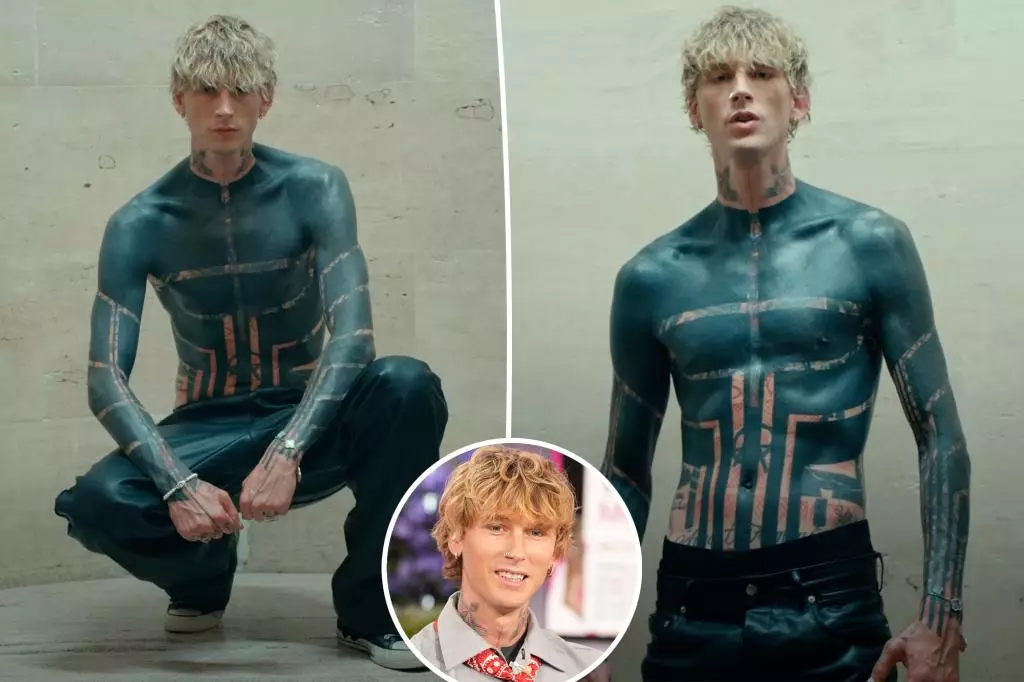The recent transformation of Machine Gun Kelly’s physique through a massive blackout tattoo is more than just body art; it’s a profound act of self-expression and psychological exploration. MGK, otherwise known as Colson Baker, boldly subjected himself to what he describes as the “worst torture” he has endured for the sake of redefining his body’s visual narrative. Unlike traditional tattoos, which often symbolize personal milestones or aesthetic choices, this extensive blackout represents a deliberate obliteration of previous self-identity, a visceral statement of resilience amid internal struggles. Such decisions challenge conventional notions of beauty and body modification, proposing instead a narrative of intentional reinvention driven by deep emotional currents.
The Painful Price of Artistic Introspection
The artist’s transparency about the excruciating pain underscores a commitment to authentic self-expression. MGK’s refusal to numb the pain, instead choosing to “thug it out,” exemplifies a mindset rooted in emotional endurance. This act is not merely about physical discomfort but symbolizes a liberation from past vulnerabilities and mental health battles. His commentary reveals an awareness of high anxiety levels, framing this physically demanding process as an extension of his ongoing psychological journey. Through this lens, his body becomes a living testament to the challenges of mental health, transforming pain into a form of artistic catharsis.
Body as a Living Storybook
Despite the vast blackout, MGK’s tattoos, including a special piece created by his teenage daughter Casie, remain visible—symbols of personal connections and memories preserved beneath the new, darkened surface. This interplay between the old and the new emphasizes the complexity of identity; even in moments of profound change, fragments of the past continue to shape one’s present. By choosing such a drastic visual overhaul, MGK challenges societal standards and explores the boundaries of self-invention, highlighting the importance of personal agency in defining one’s narrative. His body, now a layered piece of artwork, becomes a dynamic interplay of history, pain, and renewal.
Aesthetic Risk as a Reflection of Inner Turmoil
MGK’s decision to undergo this transformation after a mental breakdown is a stark illustration of how art can serve as a coping mechanism. The song “Don’t Let Me Go” mirrors his internal struggles—an emotional confession woven into his music, embodying vulnerability and resilience. His body, marked by the blackout, becomes an external manifestation of internal conflict, a visual declaration of battling darkness while seeking catharsis through ink. In embracing such a radical change, MGK not only redefines his appearance but also confronts his innermost fears head-on, proving that sometimes, true transformation begins beneath the surface, in the depths of one’s willingness to endure pain for growth.
###

